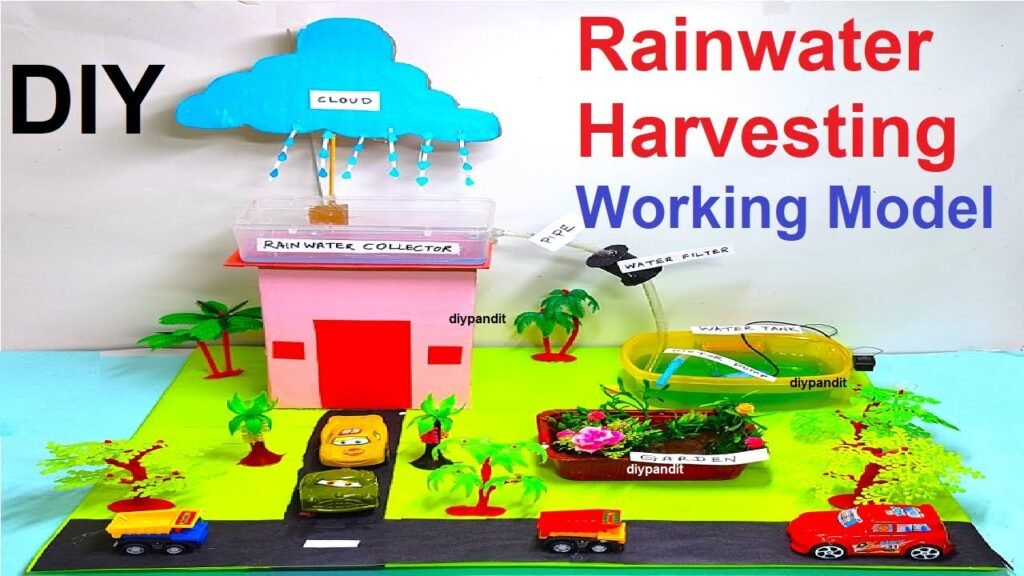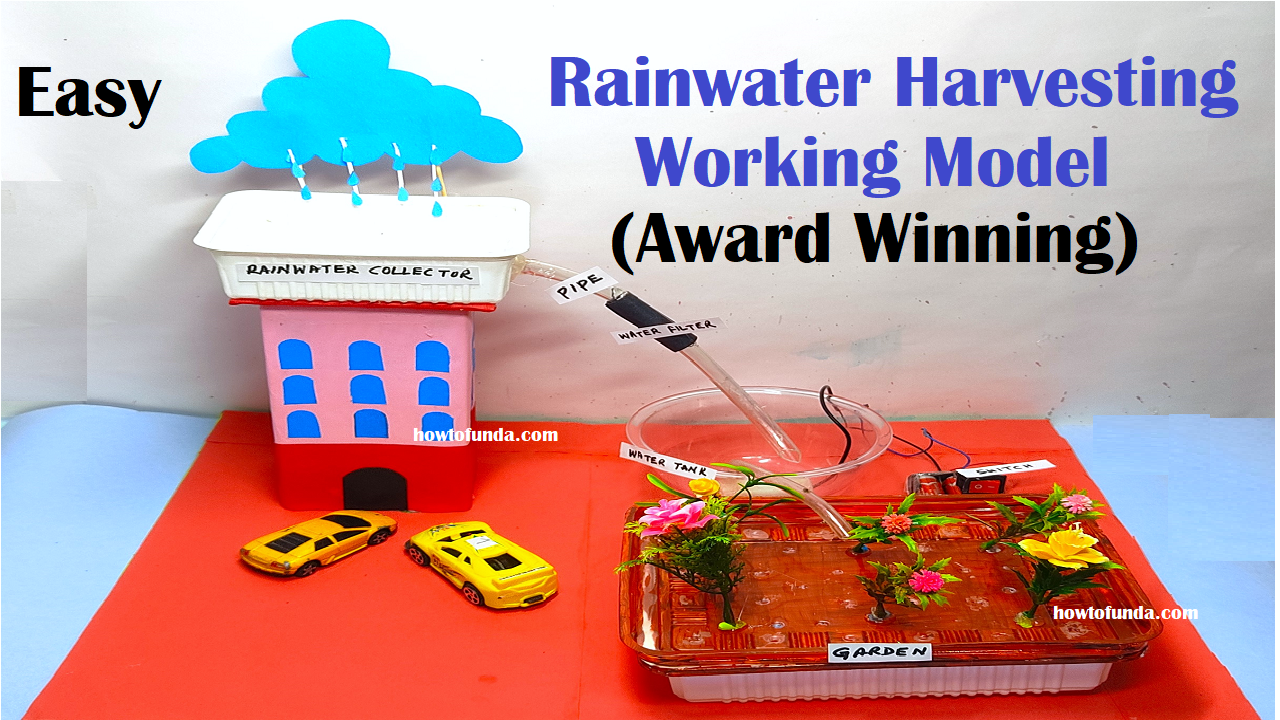Introduction:
Water is an essential resource for all life on Earth. However, the increasing demands of a growing population and urbanization have put immense pressure on our water sources.

This has led to water scarcity in many regions, necessitating the need for innovative and sustainable solutions.
One such solution is rainwater harvesting, a practice that has been employed for centuries to capture and store rainwater for various uses.
This project aims to explore the concept of rainwater harvesting, its benefits, components, implementation, and case studies to highlight its effectiveness as a sustainable water management technique.
Understanding Rainwater Harvesting
Definition of Rainwater Harvesting:
Rainwater harvesting is the process of collecting, storing, and utilizing rainwater that falls on rooftops, open grounds, and other surfaces for various purposes like household use, irrigation, and groundwater recharge.

Importance of Rainwater Harvesting:
- Preservation of Groundwater: Rainwater harvesting reduces reliance on groundwater, preserving it for times of greater need and ensuring its sustainability.
- Mitigation of Flooding: By capturing rainwater, the risk of flooding during heavy rains is reduced as the excess water is directed for storage.
- Diversification of Water Sources: Rainwater harvesting provides an additional and independent source of water, reducing the strain on municipal supplies or other sources.
Components of Rainwater Harvesting System
1. Catchment Area:
The catchment area refers to the surface that collects and directs rainwater into the harvesting system. It can include rooftops, terraces, open grounds, and other impermeable surfaces.
2. Gutters and Downspouts:
Gutters are channels attached to the edges of roofs to collect and direct rainwater into downspouts. Downspouts are vertical pipes that carry water from the gutters to the storage tanks.
3. Filtration System:
This component ensures that the rainwater collected is free from debris, leaves, and other contaminants. It includes mesh filters, gravel filters, and first flush diverters.
4. Storage Tanks:
These tanks hold the collected rainwater for later use. They come in various materials like plastic, concrete, or metal, and can be installed above or below ground.
5. First Flush Diverters:
First flush diverters are designed to divert the initial runoff of rainwater, which may contain pollutants from roofs or catchment surfaces, away from storage tanks.
Benefits of Rainwater Harvesting
1. Environmental Benefits:
- Conservation of Groundwater: By reducing reliance on groundwater sources, rainwater harvesting helps in the preservation of this vital resource.
- Prevention of Soil Erosion: Rainwater harvesting reduces runoff, which in turn minimizes soil erosion, helping to maintain healthy soil conditions.
2. Economic Benefits:
- Reduction in Water Bills: Households and businesses that implement rainwater harvesting can see a significant reduction in their water bills, as they rely less on municipal or other costly water sources.
- Savings in Irrigation Costs: For agricultural purposes, rainwater harvesting can lead to substantial savings in irrigation costs.
3. Social Benefits:
- Increased Access to Water: In regions with limited access to municipal water supply, rainwater harvesting can provide a reliable and accessible water source for households and communities.
Implementing Rainwater Harvesting at Home
1. Site Selection:
Choosing an appropriate location for the catchment area and storage tanks is crucial. Factors to consider include the size of the roof, accessibility, and the local climate.
2. Installation Process:
- Gutters and Downspouts: Attach gutters along the edges of the roof, ensuring they slope slightly towards the downspouts. Install downspouts to direct water towards the storage tanks.
- Filtration System: Install mesh filters at the entry point of the downspout to prevent debris from entering the storage tank. Additionally, consider using first flush diverters to redirect initial runoff.
- Storage Tanks: Place storage tanks at a suitable location where they can efficiently collect and store rainwater. Ensure they are properly supported and have secure covers to prevent contamination.
- First Flush Diverter (Optional): Install a first flush diverter at the beginning of the downspout to divert the initial runoff away from the storage tank.
3. Maintenance and Cleaning:
Regular maintenance is essential to ensure the rainwater harvesting system functions efficiently. This includes:
- Gutter Cleaning: Remove leaves, debris, and other obstructions from gutters and downspouts to allow for unobstructed water flow.
- Filter Replacement: Periodically replace or clean filters to ensure they effectively remove contaminants from the collected rainwater.
- Tank Cleaning: Clean the storage tank periodically to prevent the buildup of sediment, algae, or other impurities.
Conclusion:
Rainwater harvesting is a practical and sustainable approach to addressing water scarcity. By capturing and utilizing rainwater, individuals and communities can contribute to more efficient water management and environmental conservation. Implementing rainwater harvesting systems at both individual and community levels can lead to positive economic, environmental, and social outcomes.
References:
A list of sources, books, websites,

